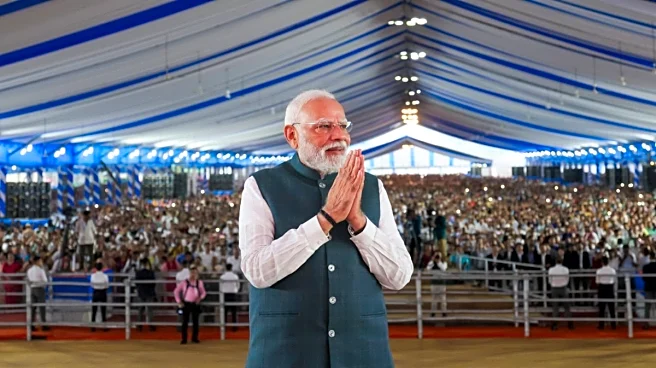What is the story about?
India's Goods and Services Tax (GST) was designed as a destination-based tax system to promote consumption and production efficiency. The goal was to make sure that the tax burden rested on the final consumer while taxes paid on inputs were rebated.
But it evolved to face challenges, including multiple tax rates, an inverted duty structure, and high compliance costs due to the ongoing complex compensation cess mechanism.
Next-Gen GST Overhaul
In its 56th meeting on September 3, the GST Council made the recommendations relating to changes in GST tax rates. The new GST rate structure, taking effect September 22, aims for rate reductions and simplifies the system.
The new rates provide relief to individuals and the middle class through simplified two-slab (5% and 18%) tax rates and reduced prices on essentials, medicines, and aspirational goods like cars and TVs.
Benefits of The GST Rate Rationalisation
The benefits include simplifying the tax structure, lowering prices for food products, promoting ease of living, boosting demand and investment, supporting manufacturing through corrected inverted duty structures, generating better revenue through a broader tax base and improved compliance, and resolving classification issues by placing similar goods and services in the same rate slab, thereby reducing disputes and litigation costs.
Big Relief for Consumers
Based on the GST 2.0 reforms, many everyday items are expected to become cheaper for consumers, while some luxury and ‘sin goods’ will face higher taxes. Many household essentials, packaged foods, medicines, and certain consumer durables (like TVs and ACs) are expected to see price reductions.
Some essential food products like UHT milk, pre-packaged paneer, and Indian breads are now taxed at Nil. Nil GST on individual life and health insurance premiums, making insurance policies more affordable and accessible. Exercise books, erasers, pencils, crayons, and sharpeners now attract Nil GST, making learning materials cheaper for families.
Lower GST rates on tractors, agricultural machinery, and fertiliser inputs are expected to reduce farming costs, potentially benefiting rural consumers and boosting rural disposable income.
In addition, mobile phones and laptops will remain at the 18% GST rate.
The rates translate to direct household savings on essentials like soaps, shampoos, and packaged foods. Lower prices across many categories are expected to increase household savings and disposable income, encouraging greater consumer spending and driving economic growth.
The GST on small cars, which covers petrol engine cars of up to 1200CC, will be taxed at a flat 18%, while the ones above four metres will attract a GST of 40%. The cess has been done away with.
But it evolved to face challenges, including multiple tax rates, an inverted duty structure, and high compliance costs due to the ongoing complex compensation cess mechanism.
Next-Gen GST Overhaul
In its 56th meeting on September 3, the GST Council made the recommendations relating to changes in GST tax rates. The new GST rate structure, taking effect September 22, aims for rate reductions and simplifies the system.
The new rates provide relief to individuals and the middle class through simplified two-slab (5% and 18%) tax rates and reduced prices on essentials, medicines, and aspirational goods like cars and TVs.
Benefits of The GST Rate Rationalisation
The benefits include simplifying the tax structure, lowering prices for food products, promoting ease of living, boosting demand and investment, supporting manufacturing through corrected inverted duty structures, generating better revenue through a broader tax base and improved compliance, and resolving classification issues by placing similar goods and services in the same rate slab, thereby reducing disputes and litigation costs.
Big Relief for Consumers
Based on the GST 2.0 reforms, many everyday items are expected to become cheaper for consumers, while some luxury and ‘sin goods’ will face higher taxes. Many household essentials, packaged foods, medicines, and certain consumer durables (like TVs and ACs) are expected to see price reductions.
Some essential food products like UHT milk, pre-packaged paneer, and Indian breads are now taxed at Nil. Nil GST on individual life and health insurance premiums, making insurance policies more affordable and accessible. Exercise books, erasers, pencils, crayons, and sharpeners now attract Nil GST, making learning materials cheaper for families.
Lower GST rates on tractors, agricultural machinery, and fertiliser inputs are expected to reduce farming costs, potentially benefiting rural consumers and boosting rural disposable income.
In addition, mobile phones and laptops will remain at the 18% GST rate.
The rates translate to direct household savings on essentials like soaps, shampoos, and packaged foods. Lower prices across many categories are expected to increase household savings and disposable income, encouraging greater consumer spending and driving economic growth.
The GST on small cars, which covers petrol engine cars of up to 1200CC, will be taxed at a flat 18%, while the ones above four metres will attract a GST of 40%. The cess has been done away with.
Do you find this article useful?
/images/ppid_59c68470-image-175820004746476529.webp)



/images/ppid_59c68470-image-175801006722178242.webp)
/images/ppid_59c68470-image-175817753333661480.webp)
/images/ppid_59c68470-image-175803756136635533.webp)


/images/ppid_59c68470-image-175811752845872414.webp)
/images/ppid_59c68470-image-175819756827836887.webp)
/images/ppid_59c68470-image-175793503071782474.webp)


